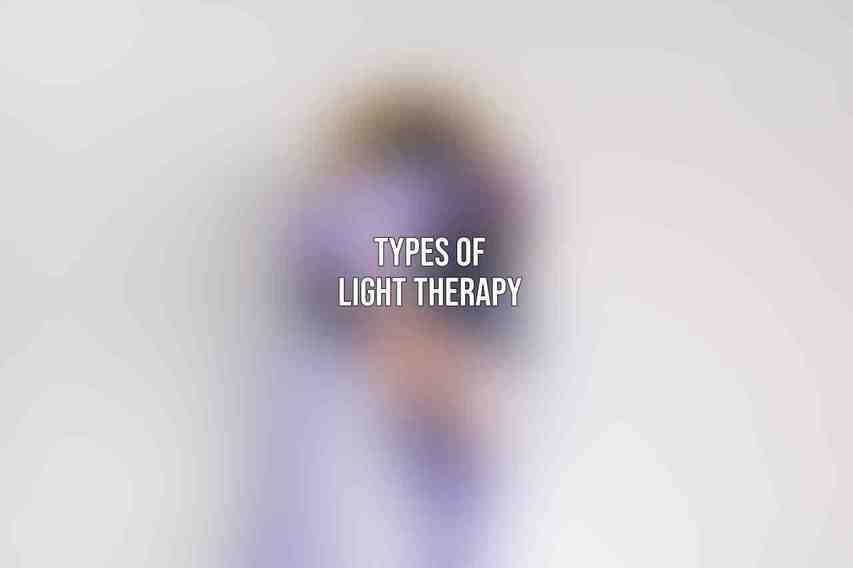Light therapy is a non-invasive treatment method that harnesses the power of specific wavelengths of light to improve mental health. The benefits of light therapy for mental well-being have been widely recognized in recent years. Exposure to light is known to play a crucial role in regulating circadian rhythms, mood, and overall mental health.
Light has a direct impact on the brain by influencing the production of neurotransmitters such as serotonin and melatonin. Serotonin, often referred to as the “happy hormone,” is associated with feelings of well-being and happiness, while melatonin helps regulate sleep-wake cycles. By understanding how light affects the brain and mood, we can utilize light therapy to address various mental health conditions.
Types of Light Therapy

Light therapy comes in different forms, each with its unique benefits. These include:
– Full-spectrum light therapy: Provides a broad range of wavelengths similar to natural sunlight, offering a more holistic approach to light exposure.
– Blue light therapy: Targets specific wavelengths to treat conditions like seasonal affective disorder (SAD) and sleep disorders.
– Green light therapy: Known for its calming effects and potential to reduce stress and anxiety.
Best Practices for Light Therapy
To maximize the effectiveness of light therapy, it is essential to follow these best practices:
– Recommended duration and intensity of light exposure: Typically ranges from 20 to 60 minutes, depending on the type of therapy.
– Optimal time of day for light therapy: Morning exposure is commonly recommended to align with the body’s natural circadian rhythm.
– Types of light therapy devices: This includes light boxes, lamps, and wearable devices designed to deliver light therapy efficiently.
IV. How Withings ScanWatch 2 and Light Can Enhance Light Therapy
Withings ScanWatch 2 offers innovative features that complement light therapy for mental health:
– Tracks sleep patterns and heart rate variability: Provides valuable insights into sleep quality and overall well-being, crucial for optimizing light therapy benefits.
– Personalized light therapy recommendations: Tailors light exposure based on individual needs, ensuring a more customized approach to treatment.
– Monitor progress and efficacy: Enables users to track their response to light therapy over time, allowing for adjustments as needed.
Using Withings ScanWatch 2 in Conjunction with Light Therapy
Integrating Withings ScanWatch 2 with light therapy can be a seamless process with these steps:
– Step-by-step guide: Set up personalized light therapy schedules using the device’s features.
– Tips for integration: Incorporate light therapy sessions into your daily routine to establish a consistent practice for better results.
Benefits of Light Therapy with Withings ScanWatch 2
The combination of light therapy with Withings ScanWatch 2 can lead to various benefits, including:
– Improved sleep quality: By optimizing light exposure, users may experience better sleep patterns and overall restfulness.
– Enhanced mood: Reduced symptoms of depression and anxiety, leading to a more positive mental outlook.
– Increased energy levels: Better cognitive function and higher energy levels throughout the day.
Precautions and Considerations
While light therapy is generally safe, some precautions to be aware of include:
Read more about this on Essential Mindfulness Practices for Beginners: A Comprehensive Guide
– Potential risks and side effects: This may include eye strain, headaches, or mood changes in some individuals.
– Consulting a doctor: Individuals with certain medical conditions or on specific medications should seek medical advice before starting light therapy.
– Importance of guidelines: Following recommended protocols for light therapy is critical to ensure safe and effective treatment.
light therapy is a valuable tool for improving mental health and well-being. By understanding the benefits and best practices associated with light therapy, individuals can harness its potential for enhancing mood, sleep, and overall mental wellness. Incorporating devices like Withings ScanWatch 2 can further elevate the effectiveness of light therapy, providing personalized insights and monitoring capabilities for optimal results. Remember to prioritize consistency and adherence to guidelines to make the most of light therapy’s benefits.
Frequently Asked Questions
What conditions can light therapy help with?
Light therapy has been found to be effective in treating seasonal affective disorder (SAD), sleep disorders, depression, and certain types of anxiety disorders.
How does light therapy work for mental health?
Light therapy works by exposing individuals to a bright light, which can help regulate the body’s internal clock (circadian rhythms) and neurotransmitter levels, leading to improved mood and sleep patterns.
Are there any potential side effects of light therapy?
Some potential side effects of light therapy include eye strain, headaches, and difficulty sleeping if used too close to bedtime. It’s important to consult with a healthcare provider before starting light therapy.
What are the best practices for using light therapy for mental health?
It is recommended to use a light box that emits around 10,000 lux of light, positioned about an arm’s length away, for about 20-30 minutes per day in the morning. Consistency and regularity in use are key to seeing benefits.
Can light therapy be used as a standalone treatment or in combination with other therapies?
Light therapy can be used as a standalone treatment for certain conditions, but it is often more effective when used in combination with other therapies such as medication, psychotherapy, or lifestyle changes. It’s important to discuss with a healthcare provider the best approach for your specific situation.

